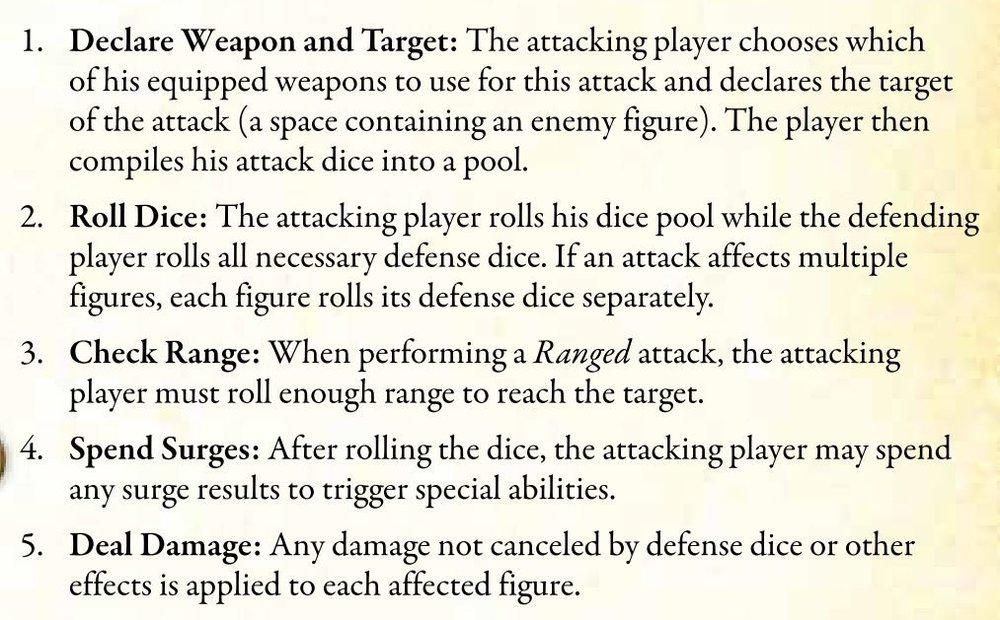3 hours ago, Hawkman67609er said:I have not been ignoring any feedback I am taking it all in, understanding it, and their point of view. Words are being inserted or changed from what they really are. There have been many arguments of people to me reading off that defense dice are rolled “against” an attack or damage “from” attacks but it says “during an attack.” And many other examples like introducing the difference between “damage suffered”and “damage taken” but it says “damage” and damage is damage. Reflective ward does in fact also strongly elude that the attacker can role a defense dice, not just the defender.
The rule book states that "the attacking player adds up all of the [Heart] results on the dice to determine how much damage is dealt by this attack." Thus, in step 2, an attack result is created that consists of the number of surges and the number of hearts rolled. This attack result can be further modified in subsequent steps of the attack (e.g. in step 4, Spend surges). Finally, in step 5, the damage component (hearts) of the attack result is used to calculate the damage dealt to the affected figure(s).
QuoteI have not been ignoring any feedback I am taking it all in, understanding it, and their point of view.
Sorry, but this is not a matter of "point of view" in the sense of equally valid positions. The answers that you received in this thread are backed up by quotes from FFG representatives, official rules and FAQ. You can of course use different house rules in your group, however be prepared that you will likely run into a lot of problems.
QuoteI find it very interesting the point brought up if damage does in fact trigger after the entire attack action and you down the hero with your damage and there is no longer a hero there to trigger the aura does it still trigger?
I assume that your "aura" refers to Andira Runehand's Hero ability. The answer is "
usually
Andira's Hero ability does not trigger if she is defeated". There are 2 conflicting effects here that trigger off the same condition if Andira suffers damage equal to her Health: "when a hero suffers damage". These effects are:
1) When a hero suffers damage equal to its Health, it is immediately defeated.
2) Each time a hero within 3 spaces of you suffers 1 or more [Heart] from an attack, the figure that performed the attack suffers 1 [Heart].
The Golden Rule states that these kinds of timing conflicts are resolved by the active player. When a monster attacks Andira, the active player is most likely the overlord and he will usually choose to resolve 1) first. When being defeated Andira is removed from the map and her Hero abiliy cannot trigger anymore.
The current rule-set of Descent is fairly complex and scattered over many rule books, FAQ documents and websites. That's why I created the CRRG in the first place some time ago. It includes only rules and clarifications from the official rule books, official FAQ and quotes from FFG employees (unofficial FAQ), and represents the most comprehensive document of this type around at the moment. It does not include any rule interpretations, house rules etc.
I cannot exclude that it still contains errors. However, most of those have been weeded out after 13 versions. You can get it from here:
https://descent-community.org/index.php/crrg/
I advise you to refer to the CRRG first, if you have any further rule questions.
Edited by Sadgit